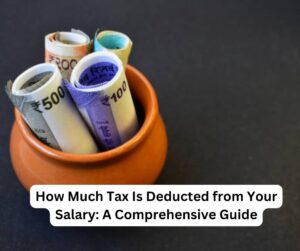
How Much Tax Is Deducted from Your Salary: A Comprehensive Guide
Understanding how much expense is deducted from your compensation can be an overwhelming errand, particularly with the different duty sections, derivations, and exceptions.
Whether you’re a first-time worker or hoping to comprehend the complexities of compensation tax collection better, this thorough aide will assist with demystifying the cycle.
1. The Essentials of Pay Design: Grasping Your Compensation Slip
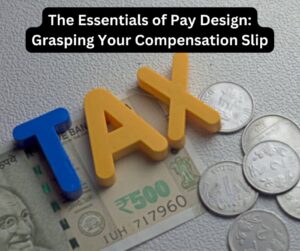
Prior to plunging into the subtleties of duty derivations, understanding the design of your salary is fundamental.
A common compensation slip incorporates a few parts:
– Fundamental Salary:
The center piece of your compensation, which is a proper sum that typically is 40-half of your complete compensation.
– Allowances:
These incorporate House Lease Stipend (HRA), Dearness Recompense (DA), Transport Remittance, and the sky is the limit from there.
– Perquisites:
Advantages given by businesses, similar to clinical protection, feast vouchers, and company vehicle offices.
– Deductions:
Allowances incorporate commitments to Opportune Asset (PF), proficient expense, and other legal derivations.
– How much assessment you pay depends on your gross income which incorporates all your profit before derivations, and net income which is what you bring back home after charges and different derivations.
2. Annual Duty Sections: The Groundwork of Compensation Taxation
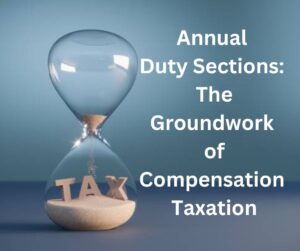
– How much assessment deducted from your compensation relies upon the income charge slab you fall under.
The Indian Annual Assessment Office has characterized charge sections in view of your pay level, which decide the rate at which you’ll be burdened.
Here is an improved on rendition of the duty sections for the monetary year 2024-25 under the new expense system:
– Up to ₹2,50,000: No assessment
– ₹2,50,001 to ₹5,00,000: 5% of pay surpassing ₹2,50,000
– ₹5,00,001 to ₹10,00,000: 10% of pay surpassing ₹5,00,000 + ₹12,500
– ₹10,00,001 to ₹15,00,000: 15% of pay surpassing ₹10,00,000 + ₹62,500
– Above ₹15,00,000: 20% of pay surpassing ₹15,00,000 + ₹1,50,000
People can likewise decide on the old expense system, which offers different exceptions and derivations, for example, Area 80C (up to ₹1.5 lakh), HRA, and that’s just the beginning.
The decision between the new and old system relies upon your monetary circumstance and speculation inclinations.
3. TDS (Duty Deducted at Source): What Is It and How Can It Work?
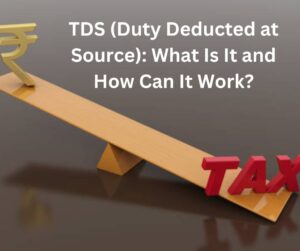
– Charge Deducted at Source (TDS) is the essential instrument through which expenses are deducted from your compensation by your manager.
The business is expected to work out your yearly compensation, decide the pertinent duty, and deduct a part of it every prior month attributing your compensation to your record.
TDS guarantees that you pay your expenses bit by bit all through the year as opposed to in a single amount.
– Toward the finish of the monetary year, the absolute TDS deducted is changed against your genuine expense risk when you record your annual government form (ITR).
4. What HRA and Different Remittances Mean for Duty Deductions
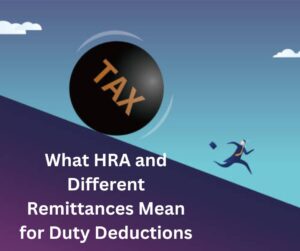
– One of the key parts that can impact how much duty deducted from your compensation is the House Lease Remittance (HRA).
On the off chance that you live in a leased house, you can guarantee HRA exclusion under Segment 10(13A) of the Personal Duty Act, decreasing your available pay.
– The HRA exception is determined in light of the accompanying:
– Genuine HRA got from your boss
– half of your essential compensation (for those living in metro urban areas) or 40% (for non-metro urban communities)
– Lease paid short 10% of your fundamental compensation
5. Understanding Segment 80C and Other Deductions

– Segment 80C is perhaps of the most well known derivation under the old duty system, permitting you to decrease up to ₹1.5 lakh from your available pay.
Interests in instruments like Public Opportune Asset (PPF), Employee Fortunate Asset (EPF), National Reserve funds Declarations (NSC), Tax-saving Fixed Deposits and Life Protection Premiums can assist you with guaranteeing this derivation.
– Different areas to consider include:
– Area 80D:
Allowance for clinical insurance payments.
– Area 80E:
Allowance for interest on training credits.
– Area 80G:
Derivation for gifts to indicated causes.
6. Instructions to Ascertain Your Bring back Home Compensation After Tax

– To ascertain your bring back home compensation after charge, follow these means:
1. Decide your gross compensation (fundamental + recompenses).
2. Take away the material exclusions (HRA, standard allowance, and so on.).
3. Ascertain your available pay subsequent to applying allowances like Area 80C.
4. Apply the expense section rates to figure your absolute duty risk.
5. Take away the TDS previously deducted by your manager to check whether you owe extra duty or are qualified for a discount.
For instance, assuming that your gross compensation is ₹12 lakh each year, and you have used ₹1.5 lakh under Segment 80C, your available pay becomes ₹10.5 lakh.
Applying the duty chunk rates, your assessment risk will be around ₹95,000 (subsequent to representing refunds).
Your boss would have proactively deducted this as TDS over time, bringing about a more reasonable monetary weight.
